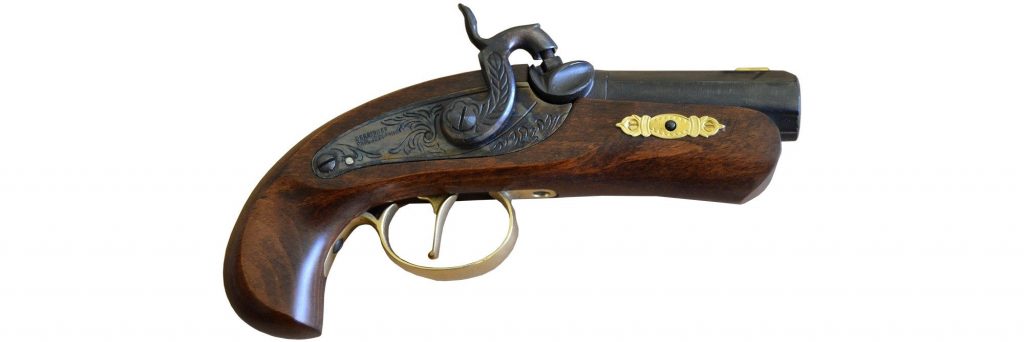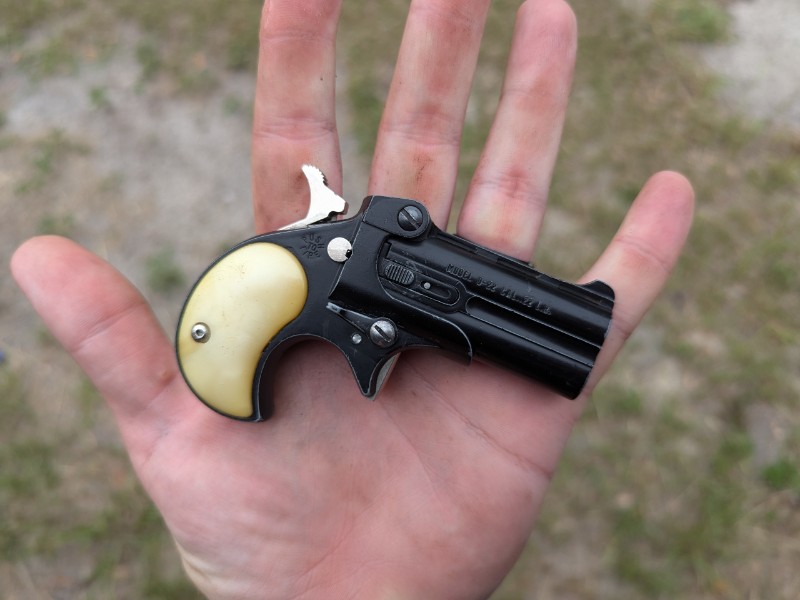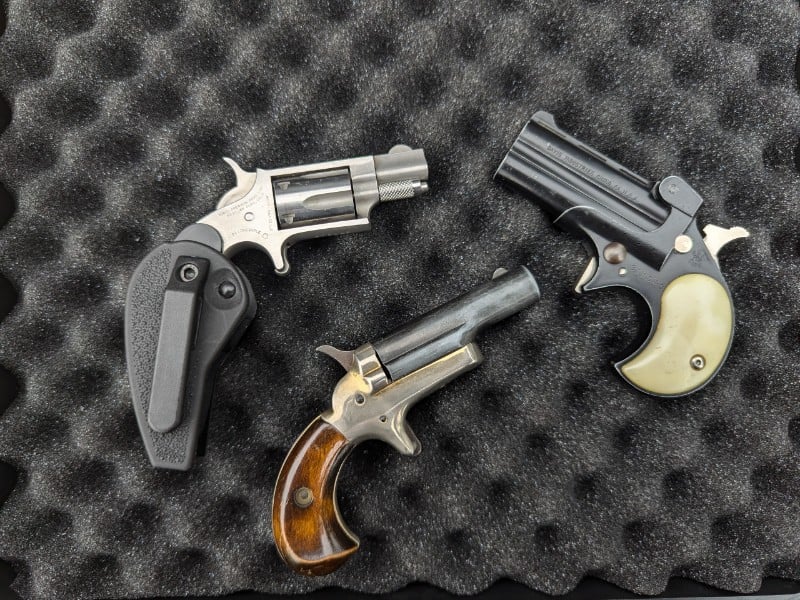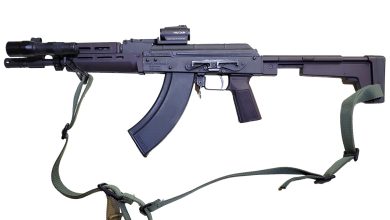My fascination with firearms history extends to the civilian use of weapons. Among the most intriguing aspects of this field is the study of concealed carry. And when it comes to historical concealed carry, derringers are a significant part of the narrative. Derringers, one of the earliest purpose-built concealed carry firearms in the United States, offer a unique window into the past.
What’s a Derringer?
There has never been a firm definition of what a derringer is. It’s an amorphous term that’s grown and expanded over the years to include a fairly wide variety of guns. What they all have in common seems to be that they are all ultra-small. They aren’t just pocket guns, but guns you could nearly fit in a coin pocket. Derringers have always been small, and these days, they are most often guns with two barrels arranged in an over/under combination.
The Early Days of Derringers
The history of the derringer officially starts in the United States, specifically in Philadelphia. Much like the Fresh Prince of Bel-Air, they were born and raised in Philly but caught on quite quickly. While derringers started in the United States, some historical context of small firearms predates the Philadelphia derringer.
Ever since the advent of firearms, there have been two running themes. First, make them shoot faster, further, and with greater accuracy. Second, find a way to make them smaller. The latter guided pistols from the 18th century into a smaller platform.

The pre-derringers had several different names, including boot pistols, vest pocket pistols, muff pistols, and more. They were designed to be easily carried and concealed by the average civilian. These guns had several designs, but the Queen Anne pattern flintlocks were the most popular.
A Queen Anne is a pistol with a screw- or turn-off barrel. Shooters removed the barrel to load the chamber directly. This meant it wasn’t a muzzle-loading design. Queen Anne pistols were available in several sizes, including ultra-small designs that were made easily hidden in vest pockets and hand warmers. These single shots predate the derringer and were typically larger, but they had the same idea.
The Philadelphia Derringer
The first derringer came from Henry Deringer. That’s Deringer with one “R.” Mr. Deringer first produced the gun in 1825. The platform became very popular firearms, first, interestingly enough, amongst military officers. The popularity spread to the civilian market, and roughly 15,000 were produced.
The Philadelphia derringers were .41 caliber and featured rifled bores. Barrel lengths could be as short as 1.5 inches but also as long as six inches. They were most commonly sold in pairs. If you only have one shot with a muzzle-loading percussion pistol, maybe you’d want one extra pistol.


These pistols varied in design. Some had front sights, but rear sights were rare. Some guns had no sights and were designed as point-and-shoot guns. The most infamous use of a Philadelphia Derringer was by John Wilkes Boothe in the assassination of Abraham Lincoln.
The news coverage of the assassination misspelled “Deringer” as “derringer,” and the latter spelling became the norm.
The Sharps Derringer
Christian Sharps designed and patented his first derringer in 1849 but didn’t produce one until 1859 when Sharps was able to patent an even smaller design. Unlike most derringers, the Sharps derringer was a four-shot pistol. It combined the firepower of a pepperbox with the small size of a derringer. The gun featured barrels that slid forward to unveil the chambers.


Once loaded, the user manually cocked the single action hammer to fire the gun. The firing pin rotated with each pull of the hammer. Sharps produced four derringer models in .22, .30, and .32 rimfire cartridges.
The Colt Derringer
As firearms evolved, so did derringers. In 1861, Daniel Moore patented a single-shot .38 Rimfire pistol. Metallic cartridges were the future, but Smith & Wesson and Rollin White kept the future to themselves with revolvers. Moore’s gun was super small and fit the derringer category.


Moore produced them until 1865, when he sold the design to the National Arms Company. They produced a .41 caliber rimfire version of the gun. In 1870, Colt purchased the National Arms Company and maintained production of the derringers. Colt produced three different derringer models, each with slight changes and improvements.
All of these guns used .41 caliber rimfire cartridges. During the cowboy craze of the 1950s, the fourth model derringer arrived. This time, it was a little .22 Short single shot. It was a replica that cashed in on the cowboy craze.
The Remington Model 95
When you hear the word “derringer,” you likely picture the Remington Model 95. This two-barreled pistol has become the stereotypical derringer with its over/under barrel combination, exposed hammer, and bird’ s-head grip. Remington began production in 1866 and produced the guns until 1935. The cartridge of choice is the .41 Short.
These guns were single-action, break-open designs. The user simply loaded both barrels and, when needed, could cock and fire the gun twice before going Winchester. Remington produced over 100,000 of the guns with only minor changes throughout the years.


They did make several finish and grip options. There were engraved models, blued models, nickel-plated models, grips of various wood types, and even ivory or pearl. Throughout the years, they’ve become popular in movies. They are seen in various Westerns, including “The Shootist,” “Wild Wild West,” and “A Few Dollars More.”
These guns were a massive success, and to this day, various companies produce replicas. Whether people know it was a Remington design or not, the two-barreled Remington derringer is the most famous of all derringers.
Into the Modern Era
Derringers have faded slightly from popularity. The advent of ultra-small guns like the Ruger LCP kind of killed the market for them as serious defensive firearms. That doesn’t mean that there haven’t been modern attempts. One of the last few genuine attempts to produce defensive derringers came in the 1980s and 1990s.
The COP 357 derringer was produced in 1983. This little four-barrel weapon looks like a semi-auto pistol. However, the gun’s four barrels give it away. The gun used a double-action trigger with a rotating firing pin. The intention was to provide a backup gun to the police. Later, a Mini Cop in .22 Magnum was produced. The gun was never successful. The gun was heavy, the triggers were excessively heavy, and the recoil was rough.
In the 1990s, High Standard produced the famed DS22 and DS38 derringers. These were more traditional micro-sized two-shot guns. However, the guns had a double-action design. They were moderately successful and still common these days.


Nowadays, companies like Bond Arms produce modern two-barrel, single-action derringers in a wide range of calibers, from .410 to 9mm Luger. Some are extremely powerful, and I wouldn’t want to shoot them. These guns aren’t typically chosen for self-defense but rather for their exquisite quality, engineering, and fun factor.
These days, the closest we have to a modern self-defense derringer is the NAA Micro Revolvers. You can argue they aren’t derringers, but they match the uber-small design and do offer a repeating five-shot option.
Derringers have long been a part of the American concealed carry market, and they don’t seem to be going anywhere anytime soon. These micro-sized guns are still produced well over a century after their advent. That’s a testimonial to their stay power and an inherent enjoyment of the design.
Read the full article here





![Best 10mm 1911 Pistols [Field Tested] Best 10mm 1911 Pistols [Field Tested]](https://gundayfunday.com/wp-content/uploads/2024/12/10mm-1911-feature-colt-delta-elite-390x220.jpg)